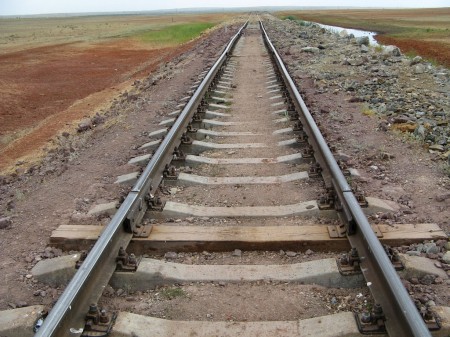
On 11 May the first direct railway connection in history between Kazakhstan and Turkmenistan was opened in the presence of the Kazakh and Turkmen presidents. The inaugurated railway line is part of the North-South project which links Central Asia (and China and Russia) with the Middle East and the Persian Gulf. The last section of the line will be completed by the end of this year and will ensure Iran and Turkmenistan are connected. The current capacity of the railway line is 3-5 million tonnes annually and estimations predict that in the medium term this figure will increase to 10 million tonnes annually. The construction of the new railway line has been financed by the countries involved in this project and the Asian Development Bank (as part of the CAREC programme). This route will be used above all for exports of Kazakh wheat and oil as well as for the transit of goods to and from Afghanistan, including oil products which are now transported mainly through Tajikistan and Kyrgyzstan.
Commentary
- The newly established route is the first railway infrastructure project to link Kazakhstan and Turkmenistan, bypassing the territory of Uzbekistan with which neither of the two countries have traditionally had warm relations. In this context the railway line is another initiative which is meant to be a break from the infrastructural legacy of the USSR and which will make both countries independent from transit through Uzbekistan, thus entrenching Uzbekistan’s regional isolation. The new route is also proof of the strengthening co-operation between Kazakhstan and Turkmenistan following the ascension to power of Turkmenistan’s incumbent president Gurbanguly Berdimuhamedow in 2006.
- Provisionally, due to the ongoing withdrawal of the ISAF forces from their mission in Afghanistan, the new route may become an integral part of the Northern Distribution Network system (the Turkmen railway network extends to the border with Afghanistan). The NDN system is used for transport supplies for NATO troops in Afghanistan and the ongoing operation of withdrawing forces and equipment from this country (to be completed in 2014). Therefore the new railway line is a potential competitor to Uzbekistan which is currently the only country through which the railway transport to and from Afghanistan is ensured. The inclusion of the new route to the NDN system was most likely the subject of talks of the Latvian president during his visit to Turkmenistan (on 14-15 May).
- In the broader context, the Kazakhstan-Turkmenistan-Iran route is another infrastructure project which has been implemented in recent years in Central Asia: in 2011 the railway line from Uzbekistan to Afghanistan was constructed and in 2012 the second railway line was opened from China to Kazakhstan. The above mentioned projects and planned initiatives (the Turkmenistan- Afghanistan-Tajikistan and the China-Afghanistan railway lines) integrate this region with China and the Middle East and decrease its dependence on Russia. The constructed and proposed railway links also reflect ongoing changes in Central Asia – Russia’s influence and that of the Soviet legacy are declining and giving way to the expansion of the infrastructure and the development of relations with new players involved in the region – above all China but also states from the Middle East.
Aleksandra Jarosiewicz is a research specialist at OSW. This article was originally published by OSW, the Center for Eastern Studies.
For additional reading on this topic please see:
China’s Central Asia Problem
Central Asia: Regional Developments and Implications for US Interests
Central Asia-Caucasus Analyst, Vol 14, No 23
For more information on issues and events that shape our world please visit the ISN’s featured editorial content and Security Watch.

